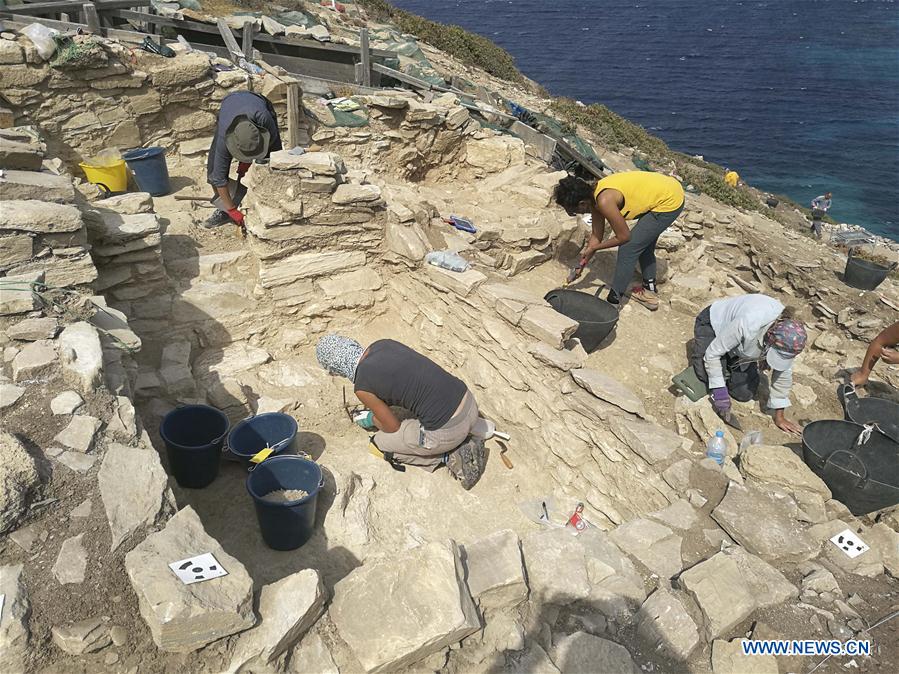The findings reveal that locals in the early Bronze Age had far more sophisticated architectural and technical expertise than initially thought.
Keros is a small uninhabited island of 15 square km, located about 10 km south of Naxos, belonging to the Cyclades islands group. It is known as an important site for the Cycladic civilization which flourished around 3200-2000 BC.
Archaeologists of the British School of Athens, digging under permit from the ministry, so far have brought to light the settlement of Daskalio next to the prehistoric sanctuary and thousands of flat-faced marble figurines. The fragmented statues are believed to have been deposited on Keros during rituals 4,000 years ago.
Last summer's excavations on Keros, conducted by a team of scientists from the University of Cambridge, the Ephorate of the Cyclades and the Cyprus Institute, focused on Daskalio where researchers found an imposing series of structures than previously thought, according to the ministry.
"The new findings show that Daskalio was covered by unique monumental constructions built with stones brought from Naxos," it said.
It is believed to have been the largest known settlement in area at the time, the ministry stressed.
Beneath the terraces, scientists participating in the project, co-directed by British Prof. Colin Renfrew, found an advanced complex of channels used either to carry water or as part of a drainage system.
Nearby experts discovered two workshops containing items which indicate that prehistoric residents were skilled in metallurgy.
Scientists will also further examine in coming months the food traces found, which included burnt seeds of grapes, olives, figs and cereals, as well as remains of legumes and almonds.
Given the small size and location of Keros, researchers believe most construction materials, metals and food products were imported.?
















